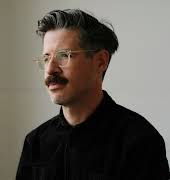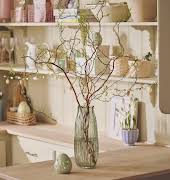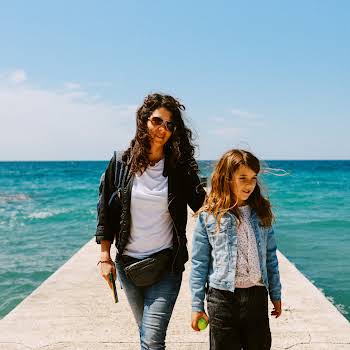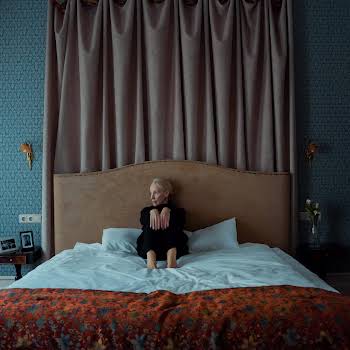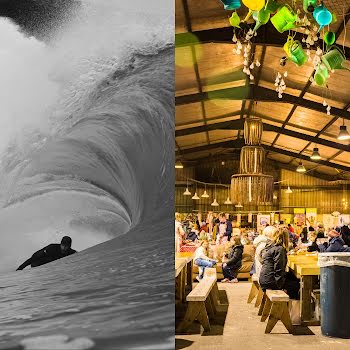By Geraldine Carton
14th Oct 2019
14th Oct 2019
eco-friendly death
With the global population becoming increasingly eco-conscious, we’ve re-discovered this article about eco-friendly deaths in the archives. Death brings excessive burden, not only on our bank accounts but on the environment too. Here we look into the alternatives available in Ireland and beyond
In Ireland, death can cost from €1,750 to €7,000 and upwards, with a standard funeral coming to a whopping €4,000 (and that’s not even taking burial costs into account).
Nowadays, a single plot in a Dublin graveyard can cost anywhere between €2,100 and €16,000. This comes down to one simple fact: there is not enough supply for the demand coming in from our ever-increasing, ever-ageing population.
However, while many of us have a vague idea of how expensive laying a loved one to rest can be, few of us are aware of the cost on the environment.
If you’re passionate about eco-friendly living, why not consider eco-dying too?
The below concepts vary in their levels of strangeness, but each one will give you the chance to champion the same sustainability values in death, as you did throughout your life.
One thing’s for sure, they’ll allow you to rest in peace, safe in the knowledge that you’ve done your bit to help the future of the world in so far as you possibly can.
Current death practices and the environment
Burial
Traditional burial practices aren’t great from an environmental perspective.
In the past, coffins in Ireland were generally made from simple, local wood, with a bit of cloth under the body and a pair of rosary beads interwoven in the deceased’s fingers. Today, things are very different. Coffins are now adorned with ruffles of silk and velvet, often made from metals, toxic plastic or endangered wood which is chemically treated and varnished for a high-shine effect.
These processes essentially make the casket non-biodegradable and this prevents a corpse from decomposing efficiently. What’s more, the fact that they’re buried six feet deep means that the body decomposes without oxygen, resulting in a slow-rotting process and the release of methane from the body, which has seriously damaging effects on the surrounding earth and nearby water systems.
Cremation
Cremation isn’t a distinctly superior alternative either, as the process uses a lot of energy and leaves a huge carbon footprint in its wake. According to Bob Butz, author of Going Out Green: One Man’s Adventure Planning His Own Natural Burial, the energy used to cremate one body is the equivalent to what is needed to drive 7.7km.
 Image via Austin Thesing on Unsplash
Image via Austin Thesing on Unsplash
Eco-friendly deaths
This topic has been hotly debated, and as of yet, the jury is still undecided on which method is best on practical, environmental and economic levels. From biodegradable coffins to reef-feeding ashes and tree-sprouting urns, here are five ways to make your last act on earth a considered, responsible and eco-friendly one.
Natural burials
A natural burial looks very similar to a normal burial, except these burials include the deceased being placed in a biodegradable coffin made from recycled or waste materials (such as willow, pine and water hyacinth), with the absence of any varnish, plastics or metals.
They’re buried just four feet underground to aid decomposition, and no embalming fluids or toxic chemicals of any kind can be used. Many Irish funeral companies provide a wide range of “eco coffins”, including Fanagans in Dublin, and Green Coffins in Donegal.
Aside from being environmentally friendly, natural burials are also far cheaper than traditional burials. Instead of a large granite memorial, each grave is identified by a tree or plant of some sort, with a simple, wooden marker identifying the deceased buried below.
Woodbrook Natural Burial Ground in Killane, Co Wexford, is Ireland’s first Natural Burial Ground, and charges €950 per single plot (while a traditional graveyard plot in Ireland can cost up to €16,000 and above). Woodbrook was created by Colin McAteer in 2010, who said that “allowing your funeral to be used as a conservation tool will leave a legacy of care and respect for our planet”.
 Image of natural burial grounds via thenaturalburialcompany.co.uk
Image of natural burial grounds via thenaturalburialcompany.co.uk
Compost your corpse
A Swedish company called Promessa has developed a way to turn a corpse into compost material through a very simple and sustainable method.
The body is freeze-dried, then submerged in liquid nitrogen. Following this, the body is exposed to thunderous sound waves which cause it to break down into a fine white powder. This powder is full of lots of nutrients for plants to thrive off, making it a perfect for planting a tree, shrub or garden.
Mushroom burial suit
We all know that the human body is filled with toxins, but what one scientist has discovered is that mushrooms are able to absorb and purify these toxins as the body decomposes, and turn them into beneficial nutrients.
It was with this knowledge that Jae Rhim Lee came to create her special head-to-toe mushroom spores burial suit.
According to Lee, these mushrooms are specially trained to break down and convert dead human tissue and pass the resulting nutrients through the soil to provide sustenance to the nearby trees. By being buried in this “spore suit”, a person can be sure that their final act will be an earthly one; feeding the forest with their own remains.
 Jae Rhim Lee wearing the mushroom suit
Jae Rhim Lee wearing the mushroom suit
Save the world’s reefs
As already mentioned, cremation is not a particularly sustainable way to go, but if the idea of being buried is too much to handle, then how about ensuring your ashes are turned into something environmentally beneficial following the cremation, at least?
As climate change causes coral reefs around the world to disappear at unprecedented levels, it’s interesting to note that we can help turn back the clock with nothing more than our cremated remains.
Eternal Reefs is one company that combines cremated remains with an environmentally-safe cement mixture to create an artificial reef, which is then dropped in the ocean to support marine life and nourish coral and microorganisms for hundreds of years to come. Cool, eh?
 Image via Toby Hudson/Wikipedia
Image via Toby Hudson/Wikipedia
Bio Urns
Providing another way to balance out the carbon emissions produced through cremation, Bios Urn has created a biodegradable urn that hosts both the deceased’s ashes, plus a tree seed within. Once the urn is buried and the tree begins to grow, the urn then decomposes, becoming part of the sub-soil and helping the ash to act as a fertiliser for the tree.
This article first appeared on IMAGE.ie in May 2018.
Top photo: David Taffet, Unsplash
Read more: ‘Eye-opening and empowering’: this climate change experience at Powerscourt is a must
Read more: One tampon takes longer to degrade than the average woman’s lifespan
Read more: Parents call for ‘living walls’ to be installed in London schools




